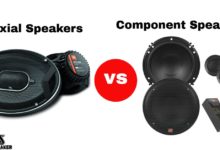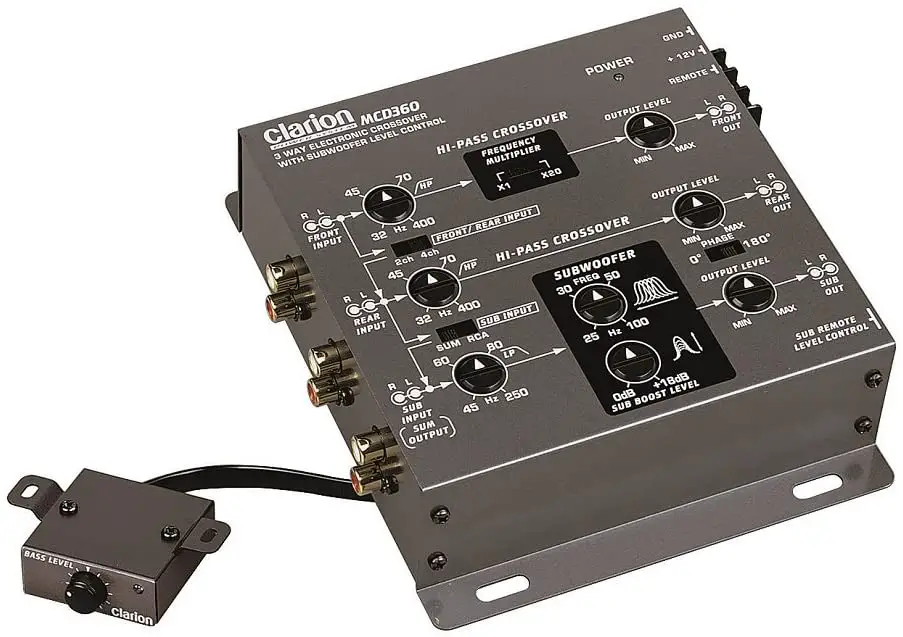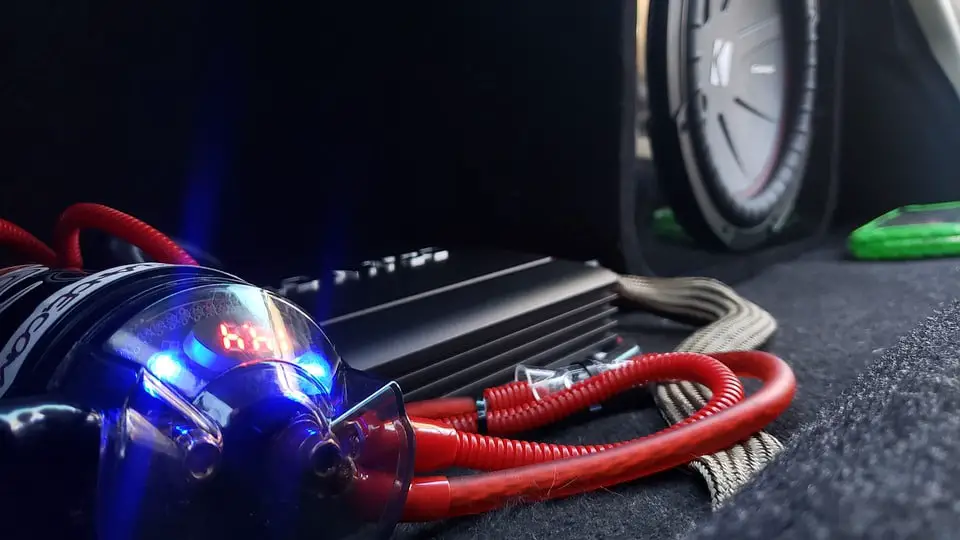Finding the difference between the front and rear speakers may be tricky as most people think they are the same.
I bet you thought the only thing that makes the two unique and stands out is the fact that one is placed at the front while the other is placed behind.
Well, in this article, you are going to learn the difference between the two, and there are a lot of them.
Let’s dive in!
Table of Contents
- 1 Difference Between Front And Rear Car Speakers
- 2 Front Stage And Rear Fill
- 3 The Size Of The Speaker
- 4 Coaxial Speakers And Component Speakers
- 5 Efficiency And Power Handling
- 6 Getting New Speakers For Your Car
- 7 How Many Speakers You Need
- 8 Front Vehicle Speakers
- 9 Rear Speakers For Your Vehicle
- 10 The Size Of The Speakers To Purchase
- 11 Should You Get Components Or Full Range Speakers?
- 12 The Power Of Your Speakers
- 13 Conclusion
Difference Between Front And Rear Car Speakers
Front Stage And Rear Fill
The speakers at the front of your vehicle determine the sound stage or how instruments and vocals are placed. A lot of attention is paid to the front speakers in all settings; if you go to a concert or anywhere where there is a sound system, all the sound emanates from your front.
Yes, I bet that puts a smile on your face. This is also the case with car speakers, as car audio manufacturers and installers focus all their attention on putting the stage in the front audio.
With that in mind, it is imperative that you pick up car speakers from the same manufacturer or installer as the case may be; this helps you prevent any mishaps of any sort.
However, if you want to make sure you get speakers with the same sound, is to get the same speaker types. If you happen to have car sound component features where the component speakers have different tweeters and woofers and coaxial speakers at the rear, this may not be attainable.
If that happens, then you can proceed to utilize cheaper speakers behind but ensure they are made to match as much as they can.
The Size Of The Speaker
Before you go on your quest for car speakers, one thing you have to put into consideration is the size of the default speakers. What this means is that you should take note of the original speakers that came with your vehicle.
However, if you like to get something more significant, you may want to you can utilize adapters and spacer rings to augment the size of your front car speaker and also the rear speakers. Often times you have to cut into a door panel to be able to modify this.
The size of the speaker ascertains how much sound the speaker produces, especially if you do not have a subwoofer.
Coaxial Speakers And Component Speakers
With component speakers, you get tweeters and woofers separately. It also offers signal division via superior crossovers.
If you have component speaker locations in your car, you can quickly ascertain them via a small speaker grille that shields the separated tweeter placed atop the door or dash.
Usually, component speakers are placed on the rundown of the producer’s to-do list, and it offers you build quality and power handling that perform better than your home sound system. For coaxial speakers, less power is needed to replace the default speakers.
Efficiency And Power Handling
Another thing to consider, which is as essential as the size of a speaker, is choosing the electronics that will give power to your new speakers.
If you drive the speakers with four-channel amplifiers, you suddenly have more options. Most high-end speakers are manufactured with the expectation of accommodating more power than the dash radio.
However, less power is required for most coaxial speakers. The ratings of the speaker’s efficiency are there to help you ascertain the extent of power required to reach a particular volume and sound performance.
Getting New Speakers For Your Car
Now that we have gotten familiar with the differences between the front and rear speakers, you may be pumped up and ready to purchase new front and rear speakers to upgrade the sound system of your car.
Well, we have thought of everything for you; that’s right, we have some fantastic tips with which you can get new car speakers; read through this carefully to enable you to get your speakers seamlessly.
You can give your speaker new life in a plethora of ways, but getting brand-new speakers is always the best option. Buying new car speakers may not be as seamless, especially if you are a newbie to something like this.
How Many Speakers You Need
The first thing you need to consider is how many speakers you need; first, you should know that there is no specific number of speakers you can install in your vehicle.
As a matter of fact, even car producers seem to increase the number of car speakers installed in cars yearly. Yes, that’s right, people want loud music, and the manufacturers want to please them.
In your bid to have the speakers of your car replaced, you must ensure that you have a voice-matched system. Yes, I mentioned this earlier in this article; you must ensure that all the speakers are from the same brand.
Different brands produce their products differently, so you do not want your front speakers to sound different from the ones at the rear. You may think you will not notice the difference, but I assure you you will.
If you do not have the funds available to buy both your front and rear speakers of the same brand, wait, do not go for a cheaper brand for your rear speakers. Instead, you can buy your front speakers first and purchase the rear speakers (of the same brand and/or series).
Front Vehicle Speakers
A number of cars are equipped with two speakers in front, one for each door. And most of the time, these speakers utilize a complete range of designs. On the other hand, other vehicles come with four speakers in front of it, which means each car door has two speakers.
Rear Speakers For Your Vehicle
Most rear deck, tailgate, and door speakers are usually full range. The function of the rear speaker is to offer sound to individuals at the back of your vehicle; apart from that, it also gives you surround sound when you play your music.
You know that feeling you get that gives you the illusion that you are in a concert while you drive, yeah, that is the surround sound in play, and it is made possible by your rear speakers.
However, you may not feel their importance if you barely have any passengers in your back seat; this also applies if you are not an audiophile who does not need the surround sound experience.
The Size Of The Speakers To Purchase
Now, this is another pickle; you have determined the number of speakers you want to buy, but here comes another challenge. There is a very long list of speakers of various sizes.
However, you have no need to worry about that, all you have to do is tell the shop the brand and model of the car you intend to get the speaker for, and you are good to go.
Should You Get Components Or Full Range Speakers?
To answer this question, let us take a look at and understand the difference between these two.
Component Speakers: With component speakers, you get top-notch speaker design to facilitate impeccable sound performance. The usual component system comes with external crossovers, tweeters, and woofers.
Full Range Speakers: With full-range speakers, you get all the speaker elements in one breath; this means that the tweeter and woofer are not separated, unlike in component speakers.
If you do not want to go through a stressful installation process, then full-range speakers are your best bet, as everything goes in and out at the same time.
The Power Of Your Speakers
The speakers of vehicles have power converted into sound waves. Specific power sources are needed for car speakers to function.
Factory stereos are known to produce lower power; aftermarket sound systems, on the other hand, offer more power, not very much, but the difference is noticeable.
Basically, the sound performance is determined by the amount of power you utilize. However, in your bid to look for volume, you must ensure your speaker plays clearly while it is loud. On that note, you have to consider these two things before and when making a purchase.
The Speaker Sensitivity: The first thing you must consider is sensitivity; this checks the amount of sound a speaker gets from the power source it’s connected to.
If your factory stereo is equipped with low power, then it is best to get speakers with sensitivity ratings that are high.
However, if you have systems like an external amplifier or aftermarket stereo, which are systems with high power, then it is best to purchase speakers with sensitivity ratings that are low. They will give you impeccable sound quality if they are adequately powered.
The Power Handling Of The Speaker: The power handling of a speaker allows you to ascertain the power your speaker can take at a time. If you have a system with low power, then you must stay away from feeding it with lots of power.
However, if you have a system that is equipped with high-powered external amplifiers, then you must get speakers with solid handling.
Conclusion
The difference between the front and rear speakers of your car are few and far between, but they are pretty essential and must be known when and if you intend to buy new ones.
That is why I have attached a buying guide to this article to help you make the best choice in your next purchase.





